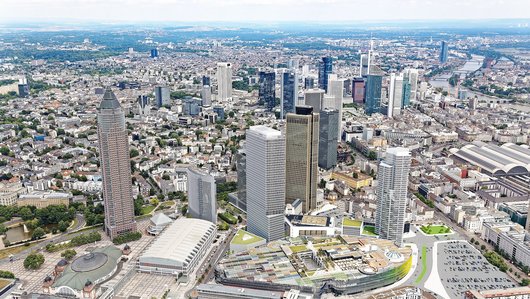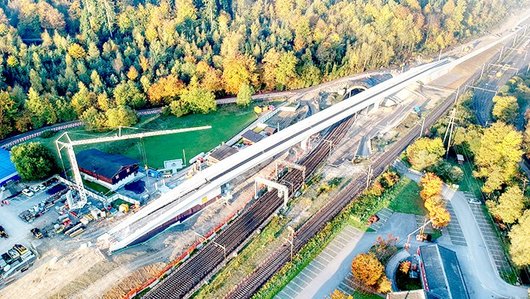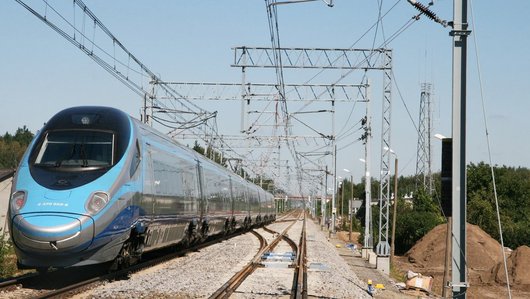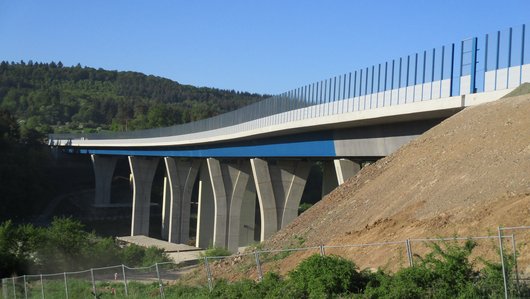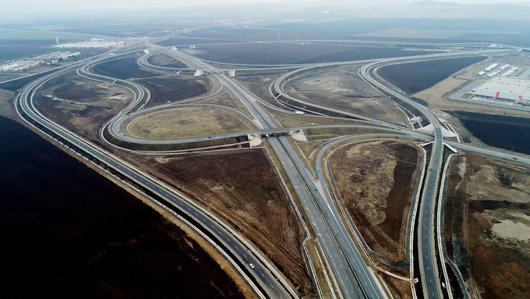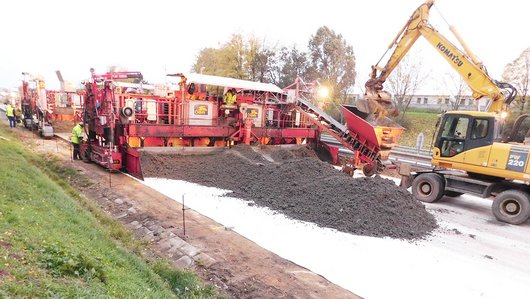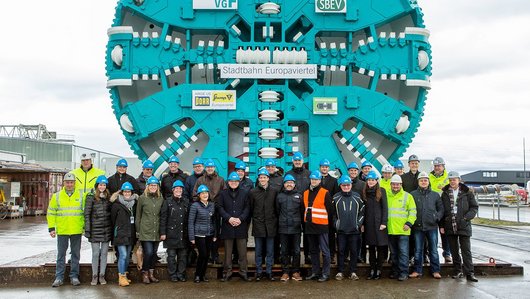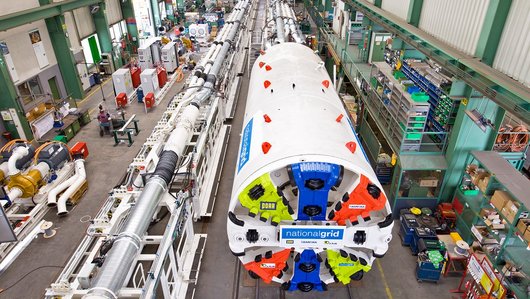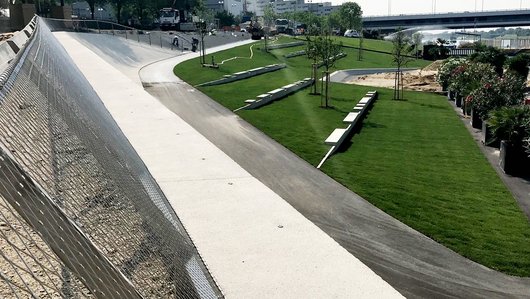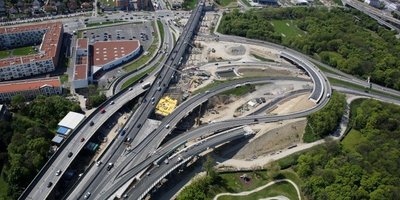
A23 Inzersdorf elevated highway
As part of a consortium with Strabag and Habau, PORR was awarded the contract for the general rehabilitation of a major section of Vienna’s main arterial road.
In addition to demolishing and rebuilding several bridges, the contract also included the construction of noise protection walls and two water protection facilities, as well as retrofitting the entire lighting system with energy-saving LED lights.
-
EmployerASFINAG Autobahnen- und Schnellstraßen-Finanzierungs AG
-
ContractorARGE PORR / STRABAG / HABAU
-
ArchitectZT Lorenz / IBBS ZT GmbH
-
Order typeGeneralunternehmer
-
Project typeTraffic route engineering
-
Project scopeDemolition and construction of semi-integral bridges, a noise protection wall, a pedestrian passageway and a drainage system
-
Order volume78.5 million euros
-
Construction start03/2015
-
Construction end08/2018
Background
In December 1970, the first section of the Vienna south-east ring road between the Inzersdorf intersection and the Favoriten junction was opened. Even then, PORR was responsible for building the superstructures of the “Inzersdorf elevated road”, which was produced as a single-span chain using lean, fast and material-efficient methods.
Originally designed to handle approximately 45,000 vehicles per day, this section of Austria’s busiest road currently has more than 100,000 vehicles roaring across it every day.
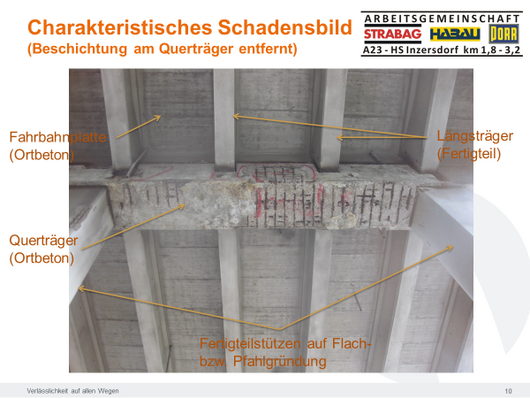

The steep rise in lorry traffic and decades of road salting were the main culprits in inflicting so much damage to the bridge structures that a standard refurbishment would no longer have been economically viable.
The old elevated highway was therefore completely demolished and rebuilt, and almost 700 metres of the road section were comprehensively rehabilitated. Today, one third of the new Inzersdorf elevated highway runs along an embankment and two thirds along solid, durable bridges.
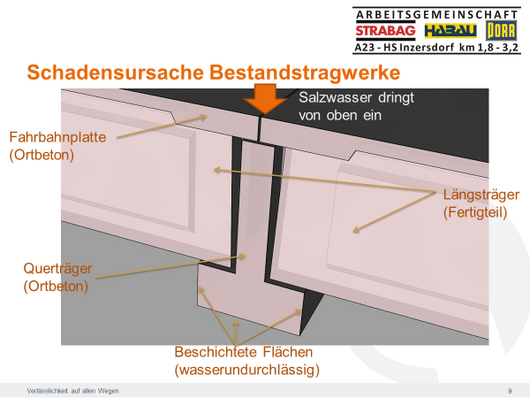

Challenging conditions
Since the Inzersdorf elevated highway plays a major role for the urban traffic of Vienna, planning and implementing the traffic management system was a real challenge. The high volume of traffic meant that individual lanes could only be closed at night and on weekends. To cope with the daily traffic volume during the construction period and to create sufficient space for the construction site facilities, the existing lane on the south side was provisionally widened by up to 9.5m. After the load-bearing surfaces had thus been cleared and demolished, the northern parts of the embankments and superstructures were erected. The traffic was then diverted and the south side was demolished and rebuilt.
By shifting the support axes, it was possible to construct a large part of the new substructure under the existing superstructures without obstructing traffic on the A23. It was also possible to prefill the embankments underneath the existing structure using the same technique.
The entire construction section, including all the ramps at the Inzersdorf intersection, was around 3.7km long. When completed, the main carriageway of the A23 will have 3 lanes and one hard shoulder in either direction.
There was also a strong focus on minimising the impact on local residents. The employer Asfinag spent a total of 1.1 million euros on this. All the construction site roadways were paved and regularly swept and sprayed with water in an effort to reduce the amount of dust generated. The site setup area was scaled down, which meant that fewer trees had to be felled than originally authorised. Temporary noise protection walls were used while the existing noise protection walls were being dismantled, and speeds on the construction site were reduced to 60km/h and monitored by Section Control. Finally, working hours were cut to 6:00 a.m. to 8:00 p.m. from Mondays to Saturdays, although non-stop operations on the construction would have been legally permissible.


The building process: Construction phase 1
Before demolition of the bridge structures could begin, the existing lane had to be widened. With the aid of a composite steel bridge 2m to 7m wide, a temporary supporting structure was erected which was designed for a service life of two years.
The two water protection facilities also had to be constructed during this construction phase, as the runoff was contaminated with road salt and had to be purified before being discharged. The Neilreichgasse underpass and the Pfarrgasse overpass were also built during this phase.
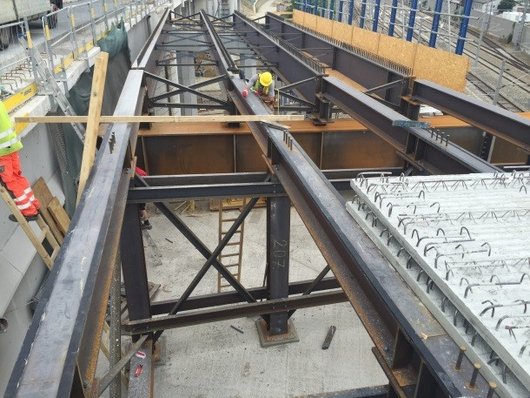

Construction phase 2
After demolition of the northern lanes, several bridges were partially or completely rebuilt and a new overpass was erected. Once the structures just above it had been demolished and the new lanes constructed, an existing railway tunnel was backfilled with a mixture of conventional filling material and foam glass ballast to save weight.


Construction phases 3 to 5
Phases 3 to 5 focused on the Altmannsdorf/Inzersdorf exit intersection. Since all the relations of the individual constructions had to be preserved, the structures had to be built in sections. Due to the limited space available and the small working area, this required a high degree of coordination. For example, the location of the crane had to be carefully selected to ensure that the crane boom would not swing out across the carriageways. At the same time, it was also possible to build two additional bridges during these phases.


Construction phases 6 to 8
After a construction period of less than two years, all the new load-bearing structures were ready for use on the southbound carriageway. This meant that the superstructures for the carriageway going in the opposite direction were now ready for demolition and rebuilding. Finally, the central reservation including guardrails, lighting and wiring was produced during the final construction phase.
The excellent cooperation among all the project participants meant that the construction period was three months shorter than planned and a bonus was paid by the client.
Conclusion
Construction work along heavily frequented roads always poses a major challenge. This is of course even more the case if the road in question is the busiest in the country. Despite the large number of different traffic phases, the limited lane closure periods and the extensive work involved, the excellent cooperation between all participants made it possible to reduce the contractually agreed construction period by three months and thus earn a bonus.
Technical data
-
Bridge deck areaApprox. 42,000m²
-
ExcavationApprox. 157,000m³
-
FillApprox. 130,000m³
-
Noise protection wallApprox. 12,000m²
-
Water protection facilities2
-
AsphaltApprox. 95,000m²
-
Traffic phases15, 8 of them peak traffic phases
-
Concrete incorporatedApprox. 55,000m³
-
Rebar incorporatedApprox. 10.000t

